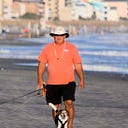Hurricanes to Wildfires: Three Indicators of a Rare Event
Not all wildfires and hurricanes are classified as rare events.
Rare events like hurricanes and wildfires affect our communication approaches. Let’s dive deeper into what makes something a rare event and our options for effective communication.
High Consequences, Low Likelihood
The high-consequence, low-likelihood nature of rare events makes them unexpectedly and disproportionately impactful.
Seven Categories of Rare Events
Rare events can usually be identified within the seven categories of crisis: economic, informational, physical (key plants and facilities), human resources, reputational, psychopathic acts, and natural disasters.
Three Indicators of a Rare Event
Historical Frequency
The first indicator is the frequency of an event’s past occurrence. By looking backward, we can feel reasonably sure that it will not happen with regularity in the future. However, this opens an availability bias.
Human Reaction
The second indicator of a rare event is how people treat a potential event once it has been identified.
People in power often believe a rare event will never happen; if it does, they have the control to deal with such events just like any other emergency.
People who are most likely negatively impacted by a rare event want protection and accountability. Often, they lack political power.
Crisis Mode
The third indicator is ‘crisis mode.’ Sometimes, we simply hear the term. Sometimes, we move into formal procedures. But when you see the shift from normal mode to crisis mode and the corresponding need to move back to a normal state, you have yet another indicator of a rare event.
The FINESSE Fishbone Diagram
We instinctively know to treat rare events differently. With all of its power to overcome the complexities and uncertainties of big decisions, FINESSE is not an approach during or immediately after a rare event. Consult resources at agencies like FEMA and CDC for an appropriate approach.
Historical frequency, human reaction to potential vulnerabilities, and our connective language are three indicators of a rare event. Plan your analysis and communication accordingly.
JD Solomon resides in the Carolinas, where he fishes, sails, and spends too much time on the beach. Professionally, JD Solomon is the founder of JD Solomon, Inc., the creator of the FINESSE fishbone diagram®, and the co-creator of the SOAP criticality method©.
